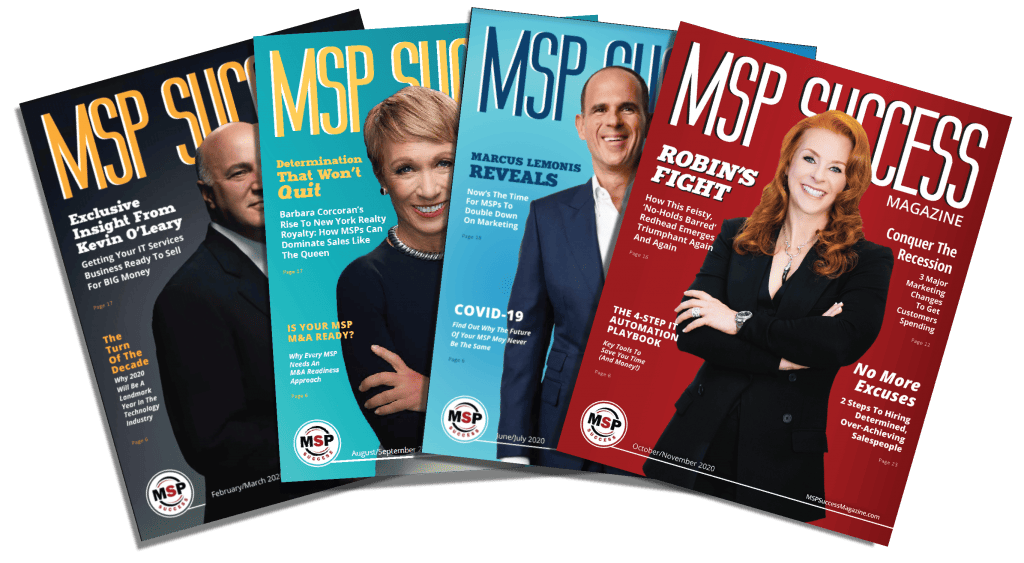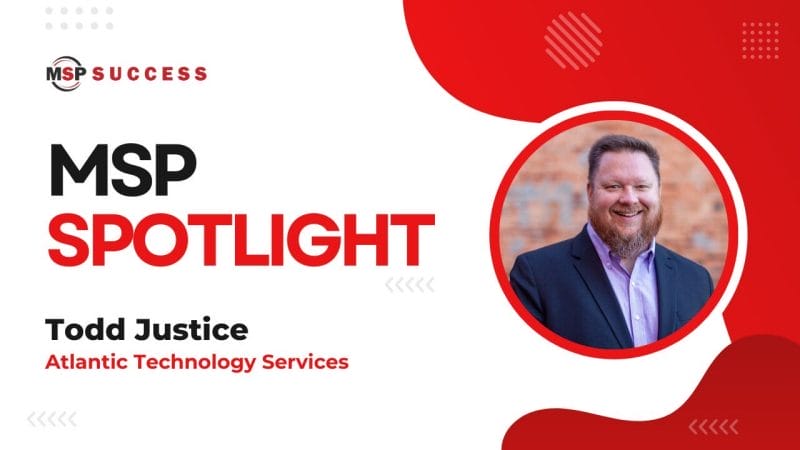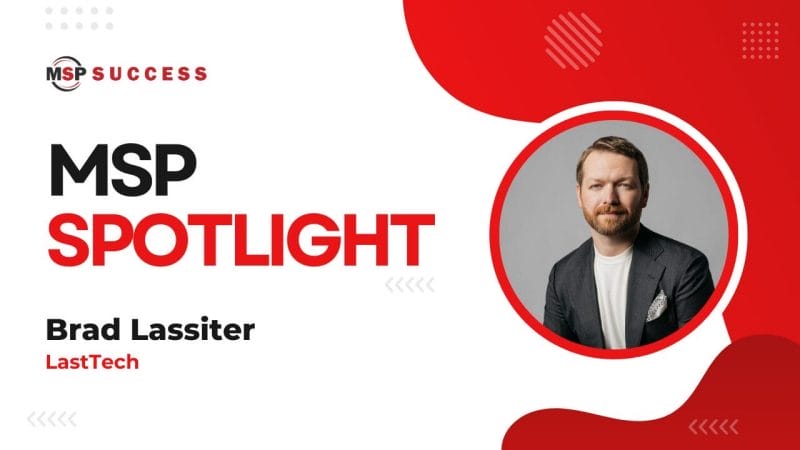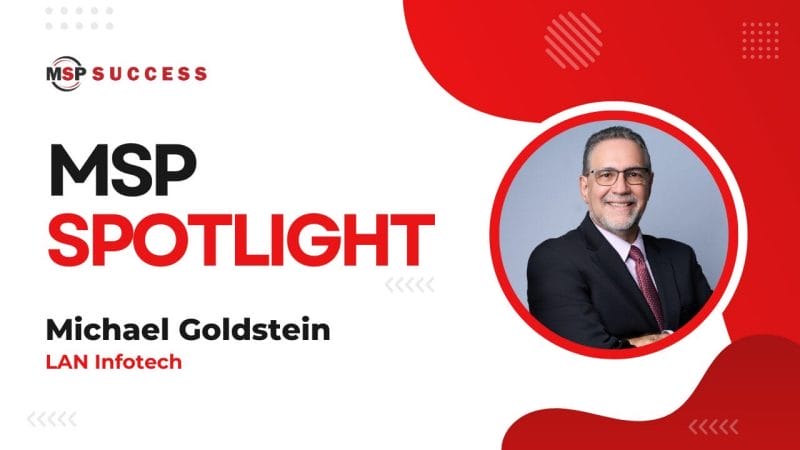Though they started out as a programming company, this MSP has long been on the bleeding edge of industry advancements, from creating their own RMM to their early adoption of AI.
Michael Haag’s Placentia, California-based business, Productive Programming, Inc., is a software company, not just an MSP. The dual-faceted model was born out of necessity and has been extremely lucrative in their nearly four decades of business, with most clients relying on them for both programming and managed services support.
But over the last five years, Productive Programming’s referral well dried up, leaving them stagnant. Thanks to Haag’s mindset shift, commitment to his business, and a major marketing investment, Productive Programming is primed to blossom into new growth.
The MSP joined TMT roughly nine months ago, and has since begun to implement new marketing strategies, such as drip email and mailing campaigns. More than that though, Productive Programming’s current focus is on raising their prices and increasing QBR frequency with their clients, so that they can capitalize on the services only their unorthodox business design can offer.
A Two-For-One Tech Company
After building up his client roster programming on the side for a few years, Haag launched Productive Programming in 1990. Eventually, Haag realized that there was an opportunity for reoccurring revenue once their programming projects were complete.
“Once we write their software, they often need someone to manage their network, and in recent years, their cybersecurity,” Haag says. To that end, he expanded the business and their offerings. “Now, our business structure is twofold—we have a programming division, and a tech support division that runs our MSP side,” he says.
In the early years of the business, this happened out of necessity. “We would go to install our software, and it wouldn’t work,” says Haag. “We’d have to fix their networks in order for our software to run. After a while, I realized we should be charging for that.”
That was Productive Programming’s start doing break-fix work, but it didn’t stop there. “Early on, I came to the realization that not only do you have to fix [the networks], you have to maintain them. These things require constant tweaking to stay working like they used to. We wrote our own RMM, back when it wasn’t cool.” That was in the late 90’s.
“It turned out to be a pretty good revenue source,” says Haag. “Not only that, but it turned out to be a great marketing source for our programming projects, just like our programming projects turned out to be a great marketing for our MSP business. They leverage each other quite nicely.” Productive Programming often ends up handling both programming and managed services for their clients. But for those who aren’t currently buying from both sides of the business, Haag hopes to change that with a new focus on QBRs.
A Mindset Shift
For most of its time in business, Productive Programming pulled plenty of clients in through word-of-mouth and referrals. Haag also got clients through what he called the “kid network”—small talking with other parents on the sidelines of sports games.
But, with his kids grown up and referrals coming in less frequently, Haag found himself needing to invest in marketing and sales for first time in his 35 years in business. Because while Productive Programming wasn’t hurting for cash, Haag also wasn’t able to take care of his employees—several of whom who have been with the business for years—as well as he’d like.
“I noticed that industry average level of pay [had increased]. My guys are great, and they’ve been with me a long time; I want to be able to pay them the same [amount] as the industry. With our current growth, we can’t do that. I want to be competitive, and more than that, I want to reward these people.”
The other element behind this mindset shift is that over the last few years, Haag has been getting offers to buy his business. “I’m not getting any younger,” Haag says. “But [potential buyers] don’t want to give me much, because I don’t have growth and a marketing program. So that opened my eyes and [made me realize] that if I’m going to sell this thing eventually, I need it to be more worthwhile and show growth and improvement.”
“Even if I don’t sell it,” Haag says, “I’m very attracted to the idea of having key people in place to run [the business], so I can spend less time managing it, keep it, and collect an owner’s salary. But in order to do that, we need to be bigger.”
Measuring Success by Their Clients’ Success
Haag has always had a different metric by which he measured Productive Programming’s success—the success of their clients. Beyond that, their client relationships have contributed heavily to their growth.
Two separate clients have come to him and asked him to raise their rates, says Haag. “We were with [one of them] when they had two employees, and now they have 70. We always treated them like they were the only customer we had, and they remember that. The owner came to me and said, ‘I know when we started, you did a lot of things for us at no profit. We’re doing well now; I want you to cut that out and make a fair profit.’ To have a customer say that to you … that’s impressive,” Haag says.
“The success of our customers has fueled our growth,” he adds. “And I like to think that we are a big part of that success.”
New Growth and Automation on the Horizon
Looking forward, Haag plans to continue to stay in front of the curve by being an early adopter of new technologies like AI. “I always like to say that, as a programmer, I’ve been doing AI for the last 40 years,” he jokes. “But AI is good for sorting through unstructured data. For example, there are AI applications that can take a healthcare data dump and use it to create a patient story. It will also flag line items in the invoice so that we can manually check them. Right now, AI is kind of patched in sporadically, so moving forward, we’ll be using AI directly within our software programs for our clients.”
Beyond that, Haag’s new marketing initiatives, increased prices, and focus on QBRs are sure to make the most of Productive Programming’s unique business model and unlock a whole new level of growth for the business.
Looking for more success stories? Check out how Todd Justice used marketing to shoot past $1M.
















